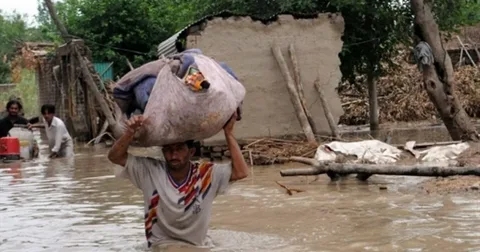Pakistan is facing a serious crisis as intense monsoon rains continue to wreak havoc across the country. According to official data, at least 190 people have died in rain-related incidents since June 26. The worst-affected areas include Punjab, Khyber Pakhtunkhwa, Sindh, and Balochistan.
In just 24 hours, 54 deaths were reported in Punjab province alone. The Pakistan Meteorological Department said the region received 124% more rainfall than usual during the first half of July. Overall, the country has experienced 82% higher rainfall this month compared to July last year.
Heavy rains in Pakistan have caused flash floods, submerged roads, and destroyed homes in both rural and urban areas. Streets in major cities like Rawalpindi and Lahore are flooded, while a cloudburst in Jhelum district forced emergency evacuations by boat.
The National Disaster Management Authority (NDMA) has issued fresh flood alerts and instructed local authorities to stay on high alert. Tourists have been advised to avoid traveling to rain-hit areas due to the risk of landslides and blocked roads.
Television footage showed dramatic rescue efforts, including an army helicopter saving a stranded family from a flooded house near Rawalpindi. Similar scenes have unfolded in other parts of the country where rainfall continues to disrupt daily life.
The ongoing situation has raised fears of a disaster similar to the 2022 floods, which killed over 1,700 people and submerged one-third of the country. Officials have warned that such extreme weather events may become more common due to climate change.
As Pakistan takes action after heavy rains kill 190, emergency services remain active across all affected regions. Forecasts suggest more rainfall is expected in Islamabad, Pakistan-administered Kashmir, and surrounding areas in the coming days.
Read the full story of how the missing teen was found 21 days after the Swat flood in this detailed report.











